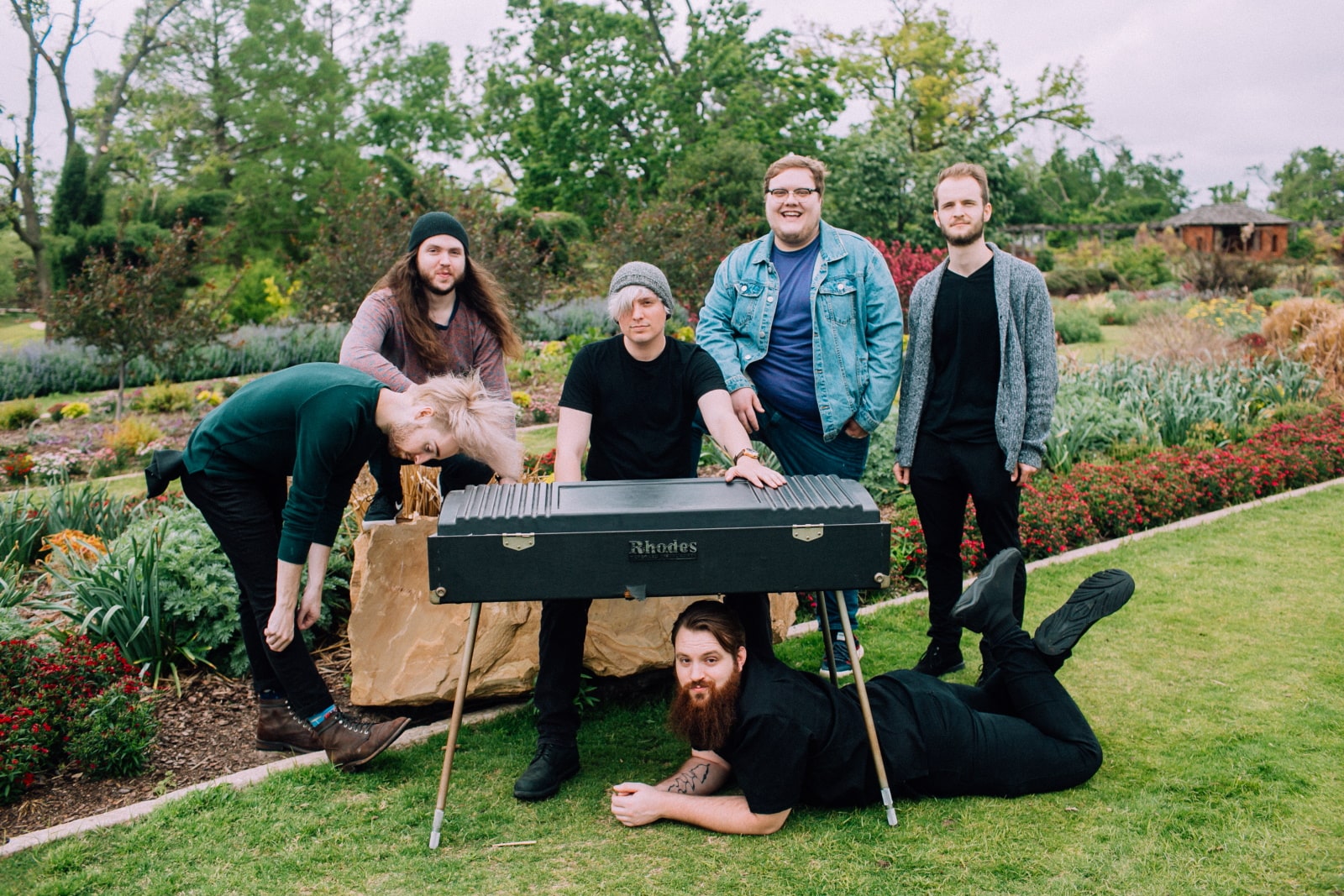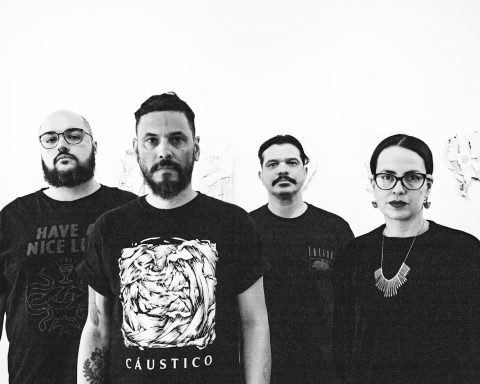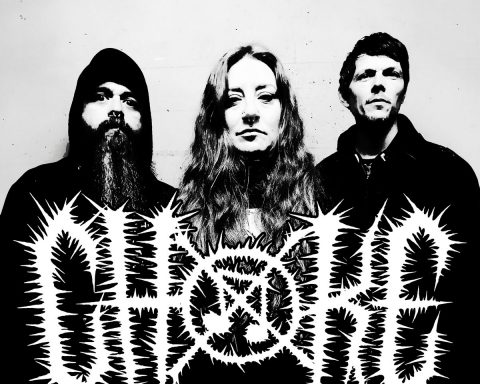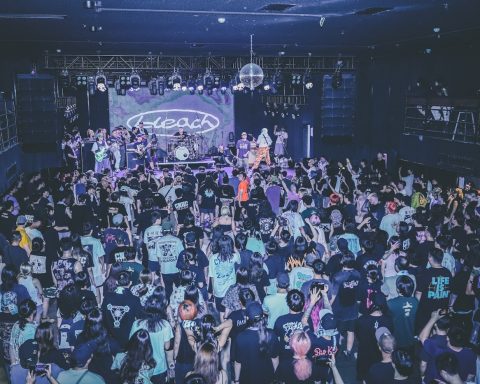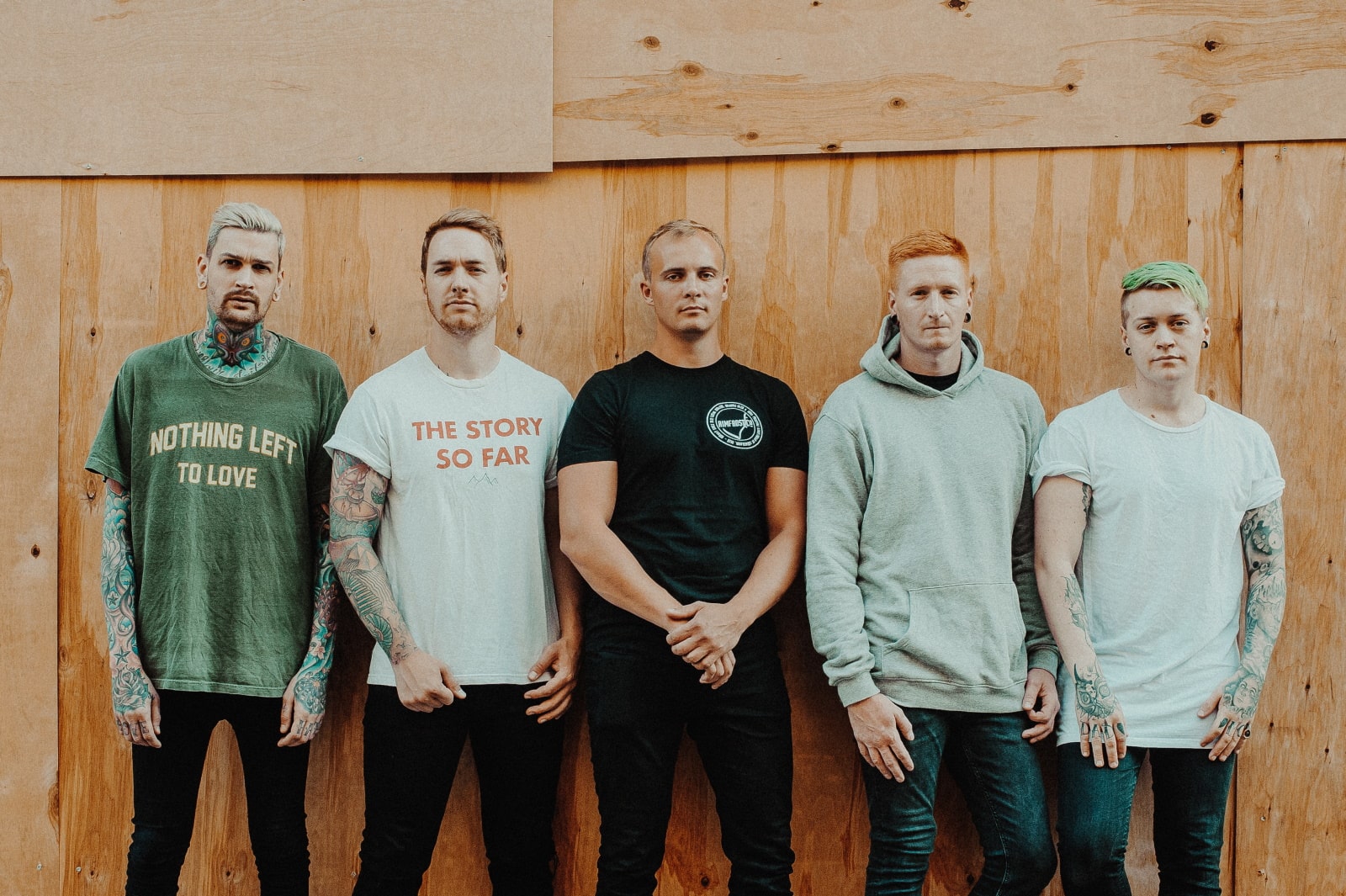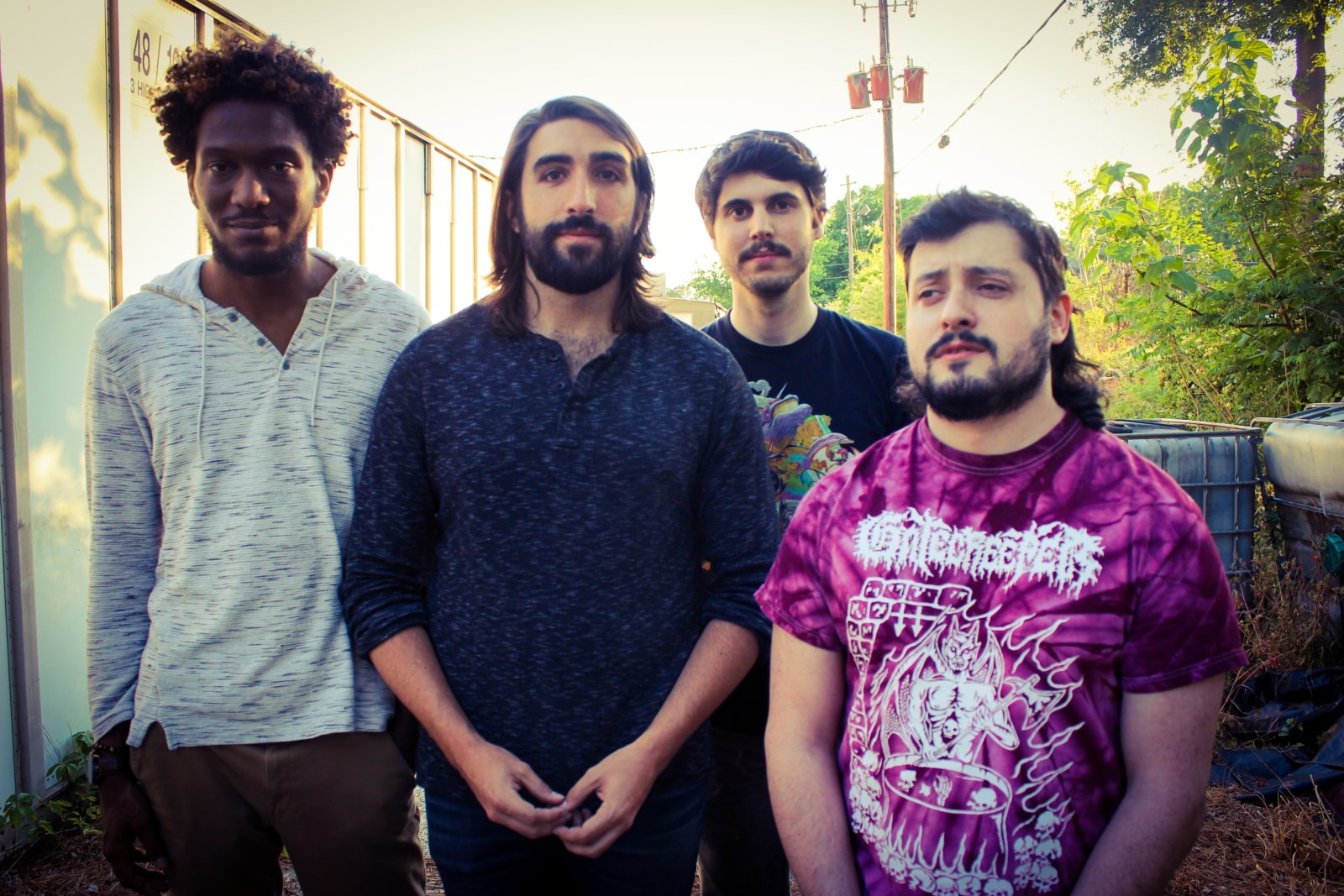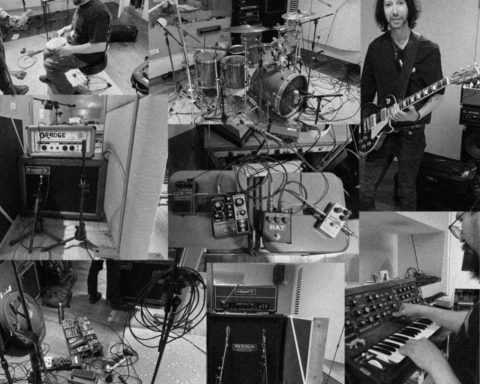Garnering attention from Anthony Fantano, and a largely organic base on Spotify (with several million streams), the Oklahoma City-based seven-piece art-rock group Johnny Manchild and the Poor Bastards draws inspiration from multiple genres including rock, funk, jazz, and grunge, featuring a unique mixture of the typical rock band drums, bass, guitar, and vocals, as well as keys and brass- namely sax and trumpet with the occasional trombone, flute, and strings. To dive a little bit deeper into their craft, we sat down with the band for abrief interview and a special lsit of their top inspirations!
From the vaudeville-esque vocals to the urgent, angsty vocals, the band has managed to cultivate a truly singular sound. And on their new record, We Did Not Ask For This Room, the band opens up about mental health with their hearts and ears wide-open.
The writing for the group’s upcoming album began in 2019 with the focus on showing their audience their growth as writers, performers, and people. Unlike their writing in the past, these songs take on much less of a metaphorical direction and instead lean more towards a literal expression of experiences with mental health issues and depression, and that’s something this album digs into in a deeper way. Cognizant of the album’s darker undertone, the group felt it necessary to be as honest as possible with translating their past into a medium accessible for everyone.
Johnny Manchild & The Poor Bastards was founded in Oklahoma City as a seven-piece art rock band. It’s a beautiful clatter of instruments, with typical rock ensemble accompanied by flutes, strings, brass, and woodwinds. Truly, this band has a singular sound. They’re not interested in mimicry. No, this group has stumbled onto something truly original.
Recorded at Sonic Ranch in Tornillo, TX, you can hear the band stretching themselves sonically and lyrically. The record sees the band building layers of horns, pianos, and drums reminiscent of Sufjan’s busy mixes on Illinoise with a danceable, disco-esque groove beneath it all. Not even halfway through the record, it feels as though there’s no ground Manchild and The Bastards couldn’t cover. The band plays like they’re at the top of their game, because they are. The excitement and passion are audible in the mix.
In the video for the song “Sift,” a later track on the record, a zombie-esque figure washes ashore and attempts to piece its life back together again. The figure washes all the excess grime and blood off, then goes in for a job interview. Ultimately, this undead person kills someone at a party. As Manchild’s urgent voice reaches crescendos of emotion,
This record is a compilation, of sorts. The band challenged themselves to release a single every month for twelve months straight. We Did Not Ask For This Room is the culmination of that work. Likewise, Manchild sought to be as honest as possible on these songs. He recalls, “Something that fans and I have consistently shared and talked about with each other is mental health issues . . . I didn’t set out to make a bummer of an album, but I did set out to be as honest as possible, and I’m excited to say I think I achieved that in a way that I find musically exciting.” There’s a depth to this record, and you can hear that weight and responsibility in Manchild’s voice.
We Did Not Ask For This Room shows what a band is capable of when they are firing at all cylinders. Every sound on this record has been meticulously thought through and choreographed, leaving no room for error. Johnny Manchild & The Poor Bastards are paving the way for a new type of rock and roll, one where genre identifiers fade and a humanistic, communal message comes across. Give this album a spin. I guarantee that as the final track fades out, you’ll feel a little more understood.
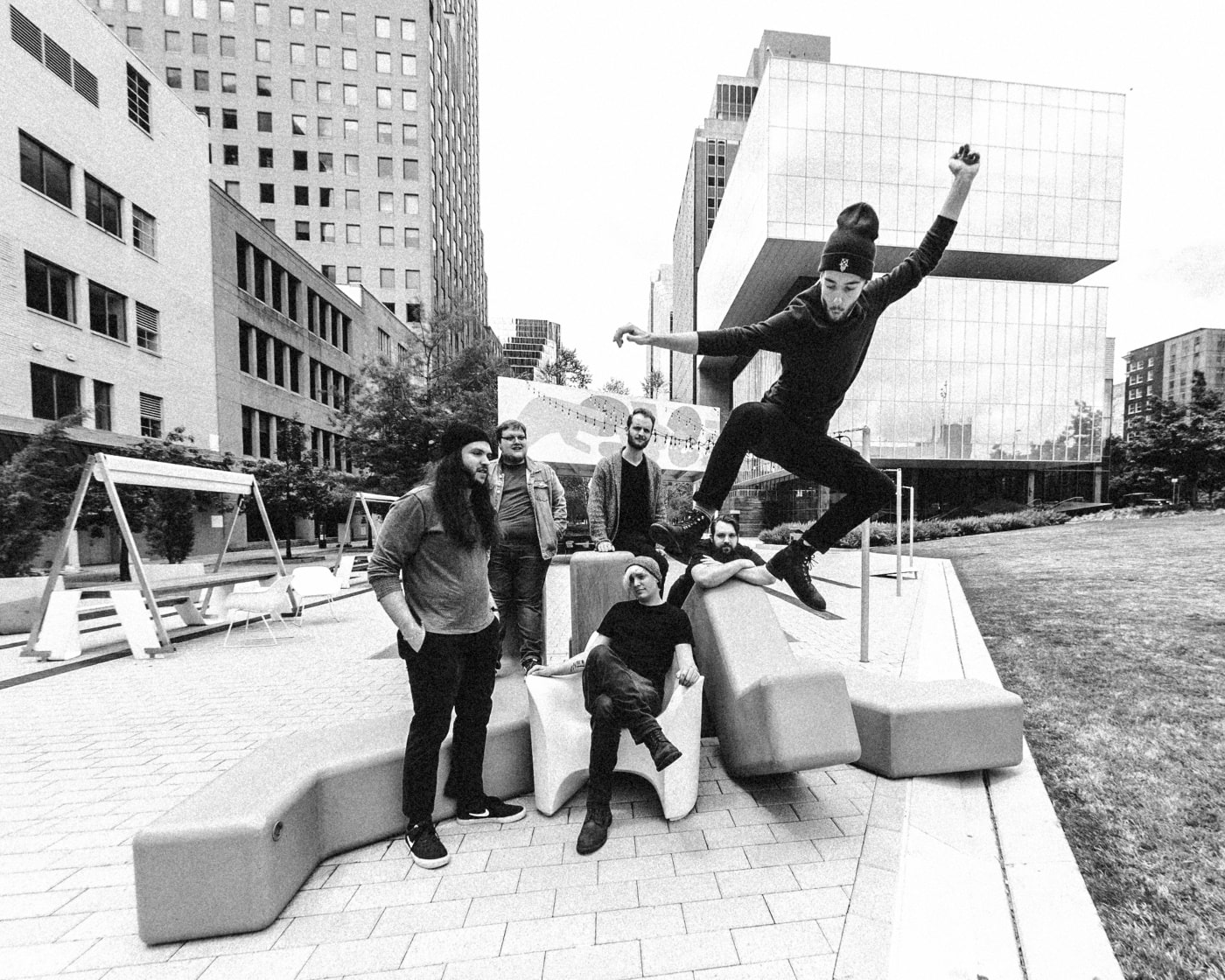
What was it like to record at Sonic Ranch? Was it exciting?
Sonic Ranch was completely amazing. I’m a recording engineer, and it’s basically a candy store for me there. They have every instrument and every piece of gear you’d need for anything that you want to do. Apart from that, the location is perfect for recording and shutting yourself out from the rest of the world and just focusing on what you’re there to do. I loved it and I want to go back and maybe live there under the console.
How do these songs weave together thematically? Was there some intentional mapping out and sequencing as you were writing and recording?
There wasn’t a theme in the sense of it being a concept album, but many of the songs deal with some of my pay suicidal issues and mental health. I spent a long time locked in the house like everyone else, and while I did write a lot of new songs, it gave me time to really hone the details of what I already had arranged. As for the tracklist order, I always knew what song would start and end the album, but the rest of it was something I felt out as we went along after recording.
What’s it like to juggle the perspectives and opinions of seven different band members?
I think there are things along the way that change as we worked the songs up from my demos, but the themes and vibes of these songs were all essentially from my perspective. I think there were moments I really liked in some songs that were created in accidental ways that came about naturally throughout preproduction, and those are the parts that come the easiest I think.
What’s one thing you’d like listeners to take away from this record?
I don’t know if I have anything specific I want people to take away from this really. We put a lot of work into making this album as honest as possible in relation to what I wrote and why. I suppose if they could take anything from it, I’d hope that anyone that can relate to some of the harder topics on the album get the same things I got from my favorite music growing up. I know music has a way of explaining and relating things better than words can sometimes, especially if I’m the one talking. Aside from that, I’m a music and theory nerd to the core, so I hope any other people like me dig the album. That’s the biggest compliment there is for me.
What’s next for you?
Well, I’m moving to Los Angeles for work as an engineer and producer, and I’ve been demoing lots of new music and planning tours for 2022! I’m hopeful this album will be well received, and I’m excited to keep working and performing music.
Top inspirations for the artsy rock by Johnny Manchild & The Poor Bastards:

1. Radiohead
Radiohead has been a favorite of mine for a while. I’d say the influence is most seen on Chamomile and Sunbeams. It’s hard to pin down influences exactly, but I know it was Radiohead that put me on to trying to create more interesting tonal palettes for some of the songs on the album. I also recognized that some of my favorite songs, such as “Codex” or “Dawn Chorus” (A Thom Yorke Solo Track), were the simplest arrangements, relying mostly on the tones and nuances they achieved.
2. Esperanza Spaulding
Esperanza just grooves more than anyone else. I tried to capture some of that on our track “We”. I actually began writing this one on bass, and adding the rest acapella with vocal harmonies. I think it was the song, “Smile Like That”, that really resonated with me initially. I knew I wanted to have a track that didn’t pull any punches with attempting something groovy and latin inspired. I’m always learning and getting better, but I think I achieved what I was hoping for in this case.
3. Nick Cave and The Bad Seeds
I grew up with the album, “Murder Ballads”, and I think about it a lot from a production standpoint. I don’t have Nick Cave’s insane bass voice, but I always loved the sonic nature of this album, “Stagger Lee” specifically. I tried to get the most smokey bar dirge vibe I could for the track “Marigold”, and that album was a heavy influence on the sound of our track. There’s definitely a departure from this vibe for the bridge, but overall, I wanted that dirty, grimey feeling.
4. Death Cab for Cutie
Death Cab influences the vocal production and guitar effects more than anything I think. More specifically, the triplet hits on the latter part of “Bixby Canyon Bridge” is definitely what inspired the culmination of our track “Sunbeams”. We definitely adapted the use of space and reverb where we could. I think the album from them that resonated the most with me would be “Transatlantisicm”, at least in the scope of what led to the production of our album.
5. Penguin Cafe Orchestra
“Perpetuum Mobile” and “Music for a Found Harmonium” are 100% the inspiration for the initial piano line of “Lovely”. I’ve always loved the persistent ostinato and melodic hemiola, and I used the same concepts in writing the repeating rhythm and melody for our song. Apart from that, even though I may not have a direct connection to point out between our music and theirs, I’ve always loved the arrangement of the strings and more eclectic instruments that Penguin Cafe Orchestra used throughout their discography.



